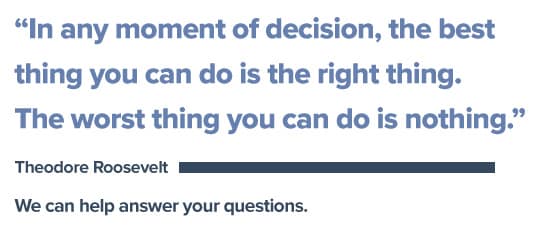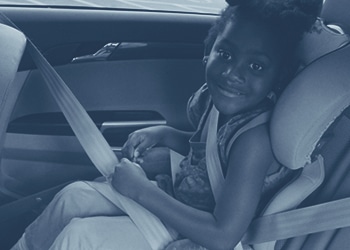Child Car Seat Lawsuit
An infant car seat lawsuit may be an option for parents whose children were seriously injured as a result of a defective child car seat, booster seat, or child safety seat. Using age and size appropriate child car seats, booster seats, and seat belts reduces the risk of serious and fatal injuries to infants and small children. However, a lawsuit claims that some car seat manufacturers marketed booster seats for smaller children despite recommendations from federal agencies and consumer organizations. Parents of children who have been injured as a result of a defective car seat or booster seat may be able to pursue compensation with the help of a product liability attorney.
For more information, contact Attorney Group today. Our consultations are free, confidential and without any obligation on your part. We can help answer your questions, and if you choose to pursue a claim we can connect you with an affiliated child car seat lawsuit attorney who can assist you throughout the legal process.

Have You Seen a Child Car Seat Lawsuit Commercial?

You may have seen a child car seat lawsuit commercial on television and wondered whether you or a loved one have been affected by a defective car seat and, if so, whether you are eligible to pursue a claim against the manufacturer or others. The purpose of this article is to provide you with additional information so that you have a better understanding of your options.
Car Seat Injuries
The Centers for Disease Control and Prevention (CDC) notes that injuries due to motor vehicle and automobile accidents are a leading cause among children in the United States. According to data published by the National Highway Traffic Safety Administration (NHTSA), 602 children aged 12 years or younger died in motor vehicle crashes in 2014, and more than 121,350 children were injured.
In many cases, child restraint systems, child car seats and booster seats are often used incorrectly or before the child is ready to move to a different type of car safety seat. According to the NHTSA, an estimated 46 percent of car and booster seats are misused in a way that could reduce their effectiveness. Likewise, some child seat manufacturers reportedly recommend booster seats for smaller children against the best practice recommendations of leading government agencies, consumer organizations and hospitals.
When children are buckled in car seats, booster seats and seat belts appropriate to their age and size, the risk of serious and fatal injuries is greatly reduced.
According to information published by the CDC, proper car seat use reduces the risk for death to infants by 71 percent and toddlers by 54 percent in passenger vehicles. Proper booster seat use reduces the risk for serious injury by 45 percent for children aged 4-8 years when compared with seat belt use alone.
Types of Car Seats and Child Safety Standards
When car seats and other child restraint systems are used properly, children are reportedly more likely to be kept safe, according to the American Academy of Pediatrics (AAP).
Types of car seats include:
- Rear-facing — Infants and children up to at least 3 years of age, or from approximately 5 to 32 pounds should use a rear-facing car seat.
- Forward-facing — Children aged 3 to 7 years should use a forward-facing car seat equipped with a harness and tether that limits a child’s ability to move forward should a crash occur.
- Booster — Children aged approximately 4 to 12 years should use a booster seat that positions the seat belt so that it fits properly over the stronger parts of a child’s body.
- Seat Belt — A child should be kept in a booster seat until he or she is big enough to fit in a seat belt properly. Seat belts should lie across the upper thighs and fit snugly across the shoulder and chest to restrain the child safely in a crash.
Infants and small children should be kept in a rear-facing car seat for as long as possible. In order to reduce the risk of death and injury and maximize child safety, it is recommended that children be kept in their proper car seat until they reach the proper age and weight limits as noted by the car seat manufacturer.
Child Car Seat and Booster Seat Best Practices
The AAP and NHTSA recommend as a best practice that children between the ages of four and seven be kept in a forward facing car seat until they reach the top height or weight limit allowed by the specific car seat’s manufacturer. Once a child outgrows a forward facing car seat, he or she is ready to be put into a booster seat, which is only meant to help an adult seat belt fit better.
Booster seats gained popularity in the United States after NHTSA required automakers to incorporate outboard rear passenger lap/shoulder combination seat belts in their vehicles. Prior to the introduction of booster seats, many children were placed in lap/shoulder combination belts that did not fit them properly. The booster seat was reportedly helpful in preventing injuries in children that were too large for forward facing child restraint systems but too small to be placed in a combination lap/shoulder belt system.
Booster seats provide a safety advantage over combination shoulder/lap belt use, however, forward facing child restraint systems are generally considered the better option for smaller children who have not outgrown their use. Unlike booster seats, forward facing child restraint systems are affixed to a motor vehicle, thereby preventing the seat’s forward movement in the event of a crash.
Although the AAP and NHTSA have recommended that smaller children are better protected by forward-facing car safety seats, booster seats are reportedly marketed for kids that weigh as little as 30 pounds and without a minimum height requirement.
Booster Seat Marketing Recommendations
Despite the clear recommendations from leading authorities that children remain in forward facing child restraint systems for as long as possible, some child seat manufacturers, in an effort to capture a larger market, reportedly advertise booster seats as safe for smaller children.
In addition to the marketing practices of some car seat manufacturers, forward facing child restraint systems and booster seats are also often marketed as side-impact tested.
In 2014, the NHTSA proposed upgrades to the federal motor vehicle safety standard for child restraint systems to ensure children are protected in side crashes. However, the proposed side-impact standards have not yet been required in the U.S., unlike car seats manufactured in Europe and Canada.
Instead, car seat manufacturers in the U.S. test their own seats to their own standards, and those standards are not always comparable to one another.
Improper Installation and Usage of Child Car Seats
Proper car seat safety is important when protecting your child during travel. However, parents may make mistakes when deciding which car seat is right for their child.
According to the Mayo Clinic, some mistakes parents make include:
- Failing to properly research the history of used car seat
- Placing the car seat in the wrong spot
- Incorrectly installing car seat or buckling up child
- Reclining child at an incorrect angle
- Moving to a forward-facing car seat too soon
- Moving to a booster seat too soon
- Incorrectly using a booster seat
- Using the vehicle safety belt too soon
The NHTSA, AAP and consumer product testing organizations such as Consumer Reports recommend that parents and others installing car seats read the manufacturer’s installation instructions before installing and using a car seat. Additionally, parents are encouraged to secure car seats in the middle of the back seat to decrease the risk of side-impact intrusion.
Child Car Seat Lawsuit Claims
According to a product liability lawsuit filed in November 2015, the plaintiffs claim that their child was ejected from her child safety seat and sustained severe injuries, including serious spinal injuries. The lawsuit alleges that a popular type of booster seat known as the Big Kid Booster seat made by Evenflo Corporation failed to keep the child safe during the car crash.
Additionally, the lawsuit alleges that the car seat was defective because it is marketed as safe for toddlers as young as one year of age or that weigh as little as thirty pounds. Despite recommendations from federal agencies and professional associations, some child safety seat manufacturers, including Evenflo, allegedly advertise and market booster seats as safe for smaller children in an effort to seize a larger part of the market share.
Lauren A. on May 16, 2016
Attorney Group reviewed by:"These guys are a pleasure to work with -- very strategic and very responsive, which makes for a great business partner! I can tell that they are passionate about making sure all clients get the attention and expertise they deserve."Rating: 5 ★★★★★
Has There Been an Child Car Seat or Booster Seat Recall?
Like many consumer products, a child car seat can be recalled due to a defect that could injure your child or loved one. Manufacturers are required to fix defects associated with the manufacturing process free of charge. Lawsuits claim that product makers failed to disclose known defects of the product and that patients suffered damages as a result.
All defects should be corrected as soon as possible. Failure to warn of hazards associated with a car seat or child safety seat can be a basis of product liability, regardless of whether the car seat has been recalled.
Is There an Child Car Seat Class Action?
There is no car seat class action associated with improper use of booster seats pending as of March 2017. However, several class action lawsuits have been filed against some car seat manufacturers claiming that their products were equipped with sticky safety belts as well as faulty armrests that can potentially be removed from its base or change positions during a collision.
When multiple lawsuits are filed against a car seat manufacturer alleging injuries and other damages caused by the product, many times these lawsuits are consolidated for discovery and other pretrial proceedings.
When cases are consolidated in this way in federal court it is called multidistrict litigation (MDL), and on a state level it is known as a state court consolidated proceeding.
MDLs are distinct from class actions, and it is generally agreed that consolidating cases instead of proceeding in a class action is a more efficient and effective way of handling claims arising from injuries caused by defective products.
Have There Been Child Car Seat or Booster Seat Settlements?
Although some cases involving defective child car seats have been settled, it is not expected that there will be early car seat settlements associated with defective booster seats. According to a report published by the New York Times in 2015, Graco Children’s Products agreed to pay $10 million to settle claims that it failed to recall approximately four million car seats equipped with an allegedly defective buckle. Graco Children’s Products eventually recalled the allegedly defective car seats in 2014 after the NHTSA demanded a recall.
The outcome of any case is never guaranteed and past results are not necessarily predictive of future outcomes. If a settlement is reached, however, it generally does not affect another patient’s right to bring his or her own individual case.
(888) 888-0612
How an Child Car Seat Lawsuit Can Help
Product makers have a duty to provide safe products. If there are risks of harm associated with their products, they also must provide adequate warnings. If a product maker fails to fulfill this duty, it could be held liable in lawsuits for injuries that may result.
Parents of toddlers and children injured by a defective child car seat or booster seat may be eligible to recover money for:
- Medical Expenses
- Lost Wages
- Pain and Suffering
The families of those killed may be eligible to recover money for funeral expenses and the pain that comes with losing a loved one.





